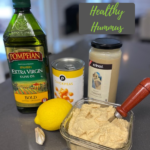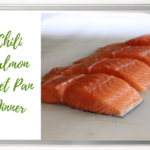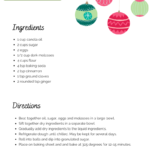Why can I eat rice on two different occasions and have completely different blood sugar results? How does rice impact my blood sugar?
I get so many great questions. I like to share the answers here knowing so many of you are eager to learn all you can about diabetes and good nutrition.
My husband Bob thinks “Marcia’s Morsels” is a good name for these tidbits of information. I like it. This morsel is specifically about diabetes. (If you don’t have diabetes you make enough insulin and things are working well enough that you won’t see big spikes in your glucose after eating.)
Ron was trying to figure out what rice did to his blood sugars.
He found that after eating a meal with rice his glucose would be anywhere from 130 to 260. Why was that?
So many more questions popped into my head:
Did you eat the same amount of rice both times?
What else did you eat when you had the rice?
Ron liked beans and cornbread. If he had these in addition to the rice they would’ve increased his glucose because they too are sources of carbohydrate that break down to glucose. On the other hand, if he had baked chicken and green beans with the rice, they would have had little impact.
Was the meal high in fat? Or fiber?
Both fat and fiber can impact how quickly the meal is digested and glucose enters the bloodstream.
When did you check your blood sugar after eating to see the effects of rice?
Some people check fasting only, which is too long after eating. Others check right after eating, before the food has had a chance to break down and glucose moves into the blood stream. (We’ll talk more about when to check your blood sugar in just a little bit).
What medication do you take and when did you take it?
Some medicine is designed to work with food. You don’t adjust pill doses but the timing of medication, or if you took it all, can make a difference. If you take mealtime insulin the dose and timing will have a big impact on the resulting glucose.
- What else were you doing around the time that you ate?
- Were you physically active before or after eating? Did the intensity or duration of the physical activity vary? Physical activity can have a profound effect on glucose levels.
- What was your glucose level before eating?
Maybe your starting glucose was quite different. For instance, if you had an afternoon snack one day and not the other your before dinner your glucose could vary quite a bit.
As you can see, it’s really hard to pinpoint the effects of one variable, like rice. So many factors affect blood sugar levels all at once, it difficult to tell the impact of one thing. It is possible but it would be necessary to hold all other variables constant which is hard to do. While the answer to the question is complex, the strategy for dealing with the problem behind the question is not.
Because all of the items mentioned above work together, being consistent is one of the best things you can do to help level out your glucose. Here are some guidelines:
1. Eat routine meals with about the same amount of carbohydrate. We call this “consistent carbohydrate.” It does not mean low or no carbohydrate. There is no one right amount of carbohydrate for everyone.
If you want to know what is right for you contact me for an appointment and I can help you with an individualized meal plan complete with how to be consistent with carbohydrate.
2. Routinely take your medication. Do not miss doses and take it about the same time each day. Set a reminder if needed.
3. Get physical activity every day, or at least 5 days a week. Exercise can lower your glucose for the next 24-48 hours so consistency and not missing more than one day at a time is best for lowering your glucose.
4. Do something to relax every day. Stress can affect glucose too.
There is a way to determine the impact of a meal on your glucose:
Check right before eating and then 2 hours after the start of the meal. It is ideal if your after-meal reading is no more than 30-50 points higher than your before meal reading.
The American Diabetes Association Target glucose:
before eating is 80-130
2 hours after less than 180.
It is not possible to have all your glucose levels in target. The goal is to have most in target. I recommend checking before and after the same meal for several days to see if you notice a pattern in your glucose before changing anything.
The more consistent you can be with your carbohydrate intake, medication, physical activity and stress management the better chance your glucose will be in target.






Pascale Michel says
Hi. Im a type1 diabetic for 34 years. I generally avoid rice/pasta but everyonce in a while I will indulge. Im good a carb counting but I find with rice/pasta the sugars are being released for longer than we think. I intermittent fast so Im done eating by 8pm. So Im able to check my sugar 2 hours after I eat and b4 bed at 12-2am. It allows me to make corrections. But when I eat rice/pasta I will always wake up high over 250 even if I went to sleep corrected. What do you think of this?
You’ve learned and dealt with a lot having diabetes for so many years! It’s common for people to have unique responses to certain foods. I’m not surprised you have this response. Your health care provider or CDCES might be able to suggest something different to try. Thanks for replying.
Kumaran says
Why do my 1 hour blood glucose levels go high as 11 but at two hours come down below 7.fasting usually around 102.
There are many factors that effect your glucose after eating—size of meal, fiber and fat content, how much insulin you make, insulin sensitivity level, and more.
Try aiming for balanced meals with lean protein, carbohydrates that have fiber such as fruits, vegetables and whole grains.
The great news is that that your glucose does not stay elevated and is back in target 2 hours after eating.
Thanks for asking! Great question!
Frank Badru says
I am a prediabetes, but l eat rice every day because that’s what is available. How do l control my sugar levels
It’s fine to eat rice everyday if it is what’s available. It is important to also get other healthy foods from different food groups. Ideally, your plate will include lean protein on 1/4 of your plate, fruits and vegetables to cover 1/2 your plate, and rice on the other cover the other 1/4 of the plate. To get all the nutrients your body needs aim for a variety of many foods, including rice. Hope this helps.
Noreen Duke says
I hate diabetes it’s driving me crazy am tired oo am just tired😢😥
You are not alone Noreen. Having diabetes is like having a job you never applied for or wanted. I suggest getting help from a diabetes specialist for the main thing that is driving you crazy.You can look for one in your area here. https://www.cbdce.org/locate
Diabetes Distress might be what you are feeling. Here’s an article that might help. https://www.diabeteseducator.org/docs/default-source/living-with-diabetes/tip-sheets/healthy-coping/distress_eng.pdf?sfvrsn=d166b458_8